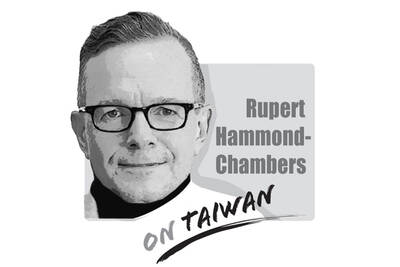If we look at the content of the “early harvest” list of the Economic Cooperation Framework Agreement (ECFA), it becomes apparent that Taiwan did extremely well for itself, with many industries expected to benefit greatly from the inking of the trade pact. Despite this, the early harvest list has still been heavily criticized, largely based on the public’s unrealistic hopes and excessive fears over the agreement.
To be precise, the early harvest list is not a complete, all-encompassing list for tariff reductions on goods and products. It is mainly intended to provide assistance to Taiwanese businesses as soon as possible because they face competition from countries that have already received tariff reductions as a result of signing freetrade agreements (FTAs) with China.
The products that eventually made it onto the list were chosen based on four criteria: necessity, low volume, less contentious and the speed with which they could be deregulated with minimum administrative hassle.
Taiwan’s early harvest list will allow 539 export items, with an estimated export volume of US$13.8 billion per year, to receive zero tariff treatment in China. This is already far more than we have achieved by signing FTAs with other nations. However, if we look at the more than 8,000 products Taiwan exports, we can see that only 6 percent of these were included on the early harvest list and it is therefore no wonder that manufacturers of items not on the list have been complaining.
A review of this 6 percent of products shows that half of them are items produced by small and medium-sized enterprises (SMEs) and traditional industries, such as automobile components, bicycle components, tires, water heaters, filters, household appliances, hand tools, clothing and accessories, underwear, shoes, socks, bags, boxes, orchids and bananas. This shows the high level of importance the government places on SMEs, traditional industries and agriculture.
In the past, SMEs like these faced several problems. Because they were small in scale, as production prices increased they were unable to reduce costs through economies of scale. In addition, as the Chinese market had many tariff barriers, they were unable to take advantage of business opportunities in China. They were therefore forced to move their manufacturing base or follow their customers.
As various industries developed, only the more competitive companies were able to stay in Taiwan. They focused more on diversified, small volume production and concentrated on quality, innovative designs and technological improvements.
The early harvest list will mean that products currently subject to tariffs of more than 10 percent or even 15 percent in China will now have those duties significantly reduced. This will provide an excellent opportunity for Taiwanese SMEs to open up markets for themselves in China and elsewhere.
For Taiwan to reap the benefits of the early harvest list, not only will businesses have to capitalize on market opportunities at the right time, the government will also have to provide assistance to SMEs, including advice on markets, funds and legal matters. I am hopeful that such moves will increase the scale of Taiwan’s traditional industries, improve the overall quality of business, promote industrial development, create employment opportunities and take Taiwan to a completely new level of economic growth.
Shih Hui-tzu is a research fellow at the Chung-Hua Institution for Economic Research.
TRANSLATED BY DREW CAMERON

In the past month, two important developments are poised to equip Taiwan with expanded capabilities to play foreign policy offense in an age where Taiwan’s diplomatic space is seriously constricted by a hegemonic Beijing. Taiwan Foreign Minister Lin Chia-lung (林佳龍) led a delegation of Taiwan and US companies to the Philippines to promote trilateral economic cooperation between the three countries. Additionally, in the past two weeks, Taiwan has placed chip export controls on South Africa in an escalating standoff over the placing of its diplomatic mission in Pretoria, causing the South Africans to pause and ask for consultations to resolve
An altercation involving a 73-year-old woman and a younger person broke out on a Taipei MRT train last week, with videos of the incident going viral online, sparking wide discussions about the controversial priority seats and social norms. In the video, the elderly woman, surnamed Tseng (曾), approached a passenger in a priority seat and demanded that she get up, and after she refused, she swung her bag, hitting her on the knees and calves several times. In return, the commuter asked a nearby passenger to hold her bag, stood up and kicked Tseng, causing her to fall backward and
In December 1937, Japanese troops captured Nanjing and unleashed one of the darkest chapters of the 20th century. Over six weeks, hundreds of thousands were slaughtered and women were raped on a scale that still defies comprehension. Across Asia, the Japanese occupation left deep scars. Singapore, Malaya, the Philippines and much of China endured terror, forced labor and massacres. My own grandfather was tortured by the Japanese in Singapore. His wife, traumatized beyond recovery, lived the rest of her life in silence and breakdown. These stories are real, not abstract history. Here is the irony: Mao Zedong (毛澤東) himself once told visiting
When I reminded my 83-year-old mother on Wednesday that it was the 76th anniversary of the founding of the People’s Republic of China, she replied: “Yes, it was the day when my family was broken.” That answer captures the paradox of modern China. To most Chinese in mainland China, Oct. 1 is a day of pride — a celebration of national strength, prosperity and global stature. However, on a deeper level, it is also a reminder to many of the families shattered, the freedoms extinguished and the lives sacrificed on the road here. Seventy-six years ago, Chinese Communist leader Mao Zedong (毛澤東)